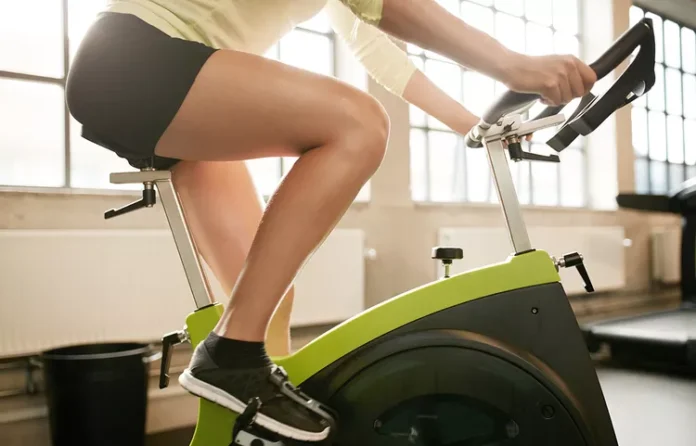When you go a few weeks or months without hitting up a particular class or type of workout, there are bound to be a few surprises your first time back. In yoga, for example, you might forget about the chest and shoulder soreness that hits after one too many Chaturanga poses. Or, rock climbers may have to re-remember the forearm ache that can crop up after a day on the wall.
On-and-off bikers, though, often experience a different type of pain — and one that they’re probably less likely to bring up at post-workout brunch: butt and vulvar soreness. Though it’s tempting to write off that awkward ache as normal, or just the feeling of little-used muscles getting used to an intense workout, you may want to pay closer attention.
“Pain is never normal. It’s your body telling you to stop doing something,” says Lauren Streicher, M.D., an ob-gyn and clinical professor of obstetrics and gynecology at the Feinberg School of Medicine at Northwestern University. So, what can you do to prevent that soreness from cropping up — if anything? Try these simple tips, below.
The Worst Mistakes You Can Make at Your Indoor Cycling Exercise Class
Tips to Stop Butt and Vulvar Soreness On the Bike
Luckily, there’s a relatively simple and quick fix for the casual biker who may frequent cycling classes or take shorter outdoor rides. Just tweaking your bike’s setup may help ease that soreness, especially if you’re sticking to rides or classes that are under two hours long, says Dr. Streicher. “If you’re taking a Spin class, go up to the instructor and ask them to adjust your bike,” she suggests.
10 Ways to Have a Better Indoor Cycling Class
The key? Make sure your handlebars are positioned level with or slightly higher than the saddle of the bike. According to a study in the Journal of Sexual Medicine, handlebars that are lower than the saddle increase the pressure put on your genital area, which can lead to numbness. Why? Because you’re leaning over to put your hands on those bars, which means that all of your weight is concentrated in that already sensitive region. Sitting more upright forces you to shift your weight to your sit bones.
If a simple adjustment doesn’t stop the pain and soreness, you can try getting padded bike shorts or an extra-padded or wide bike seat, suggests Dr. Streicher. But making sure your bike is adjusted correctly should do more for your comfort than the gear you’re using. (These bike seat cushions work with pretty much any bike you have.)
Endurance bikers may be more likely to experience numbness, tingling, or pain since the amount of time spent in the seat can increase the risk of nerve compression, notes Dr. Streicher. Adjusting your seat and handlebars should help that, too. But if the pain or tingling is persistent — and if investing in padded shorts and seats for your riding style doesn’t help either — you may need to cut back on the length or frequency of your cycling excursions, she says. Consider exchanging your century races for a triathlon instead.


